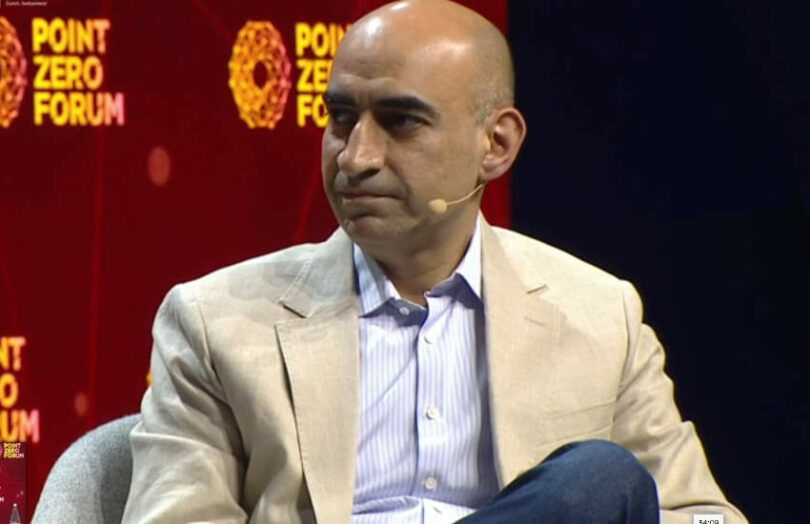In the tech world, the well known ethos is to move fast and break things. That doesn’t work for regulated institutions. But disruption is another matter. At the Point Zero Forum six weeks ago, executives form the traditional finance (TradFi) digital asset sector, including SIX Digital Exchange, SBI and JP Morgan, discussed the key challenges for institutions building the next genration of financial infrastructure.
On the risk management side, David Newns, CEO of SIX Digital Exchange (SDX), compared TradFi to NASA and its latest SLS rocket, which costs billions every time it launches. It’s unacceptable for it to explode on the launchpad and a reputational risk for NASA. In contrast, SpaceX’s Starship 1 is in the move-fast-and-break-things camp, and Musk is happy simply if it gets off the pad.
While people are losing billions of dollars in the experimental DeFi world owing to smart contract vulnerabilities, in TradFi it’s unacceptable to lose a single token, never mind thousands or millions. In a regulated environment, “it has to work the first time. Every single time,” said Newns.
SBI Digital Asset CEO, Fernando Luis Vazquez Cao, spoke about the public blockchain DeFi trials it recently conducted with JP Morgan’s Onyx. It took a few weeks to do the technical work, but the legal side took nine months to get approvals from the risk and compliance departments and regulators in three countries.
Will TradFi replicate current processes?
The panel included a single startup, Swiss digital asset bank Sygnum, a partner of both SDX and SBI. “I can understand why you’re all saying it’s a very different thing to do it in a fully regulated manner, but we should also be careful that we don’t use it as an excuse to not move ahead,” said Sygnum CEO Mathias Imbach. “And that leads to the question, why has it not moved?” At the start of the discussion Imbach noted that by now he expected digital assets and tokenization to have progressed much further.
He believes the lack of advancement is because incumbents don’t want to be disrupted. And if it takes nine months to get a sign off, there’s a risk that the process looks the same as it has since the 70s, which is not innovation.
Disrupt yourself or be disrupted
On the disruption point, the CEO of Onyx by JP Morgan, Umar Farooq, believes its more of a cultural difference and how aggressive you want to be. “The remit for my team for the Onyx side is to blow it up, but to do it in a manner where you’re compliant with regulation,” said Farooq.
It’s not because JP Morgan wants to disrupt itself for fun. But because there’s an awareness that if it does nothing, it will be disrupted by the likes of startups such as Sygnum. “So you might as well do it (disrupt) yourself,” said Farooq.
Apart from disruption, another issue is endurance. SDX’s Newns highlighted the challenge of a marathon as market infrastructure slowly evolves. “We’re not going to deliver the future in the next 18 months,” said Newns. “This is a decade long exercise.” It’s hard to align stakeholders internally in a single moment, but to do it longer term is a bigger challenge. Plus, it isn’t just internal participants but also external members and stakeholders that need to cooperate long term.
Tokenization and interoperability
Five years ago, there was an expectation that enterprise blockchain networks would be shared. Today there are numerous bond issuance platforms, each on separate networks.
One thing’s for sure: the current state of walled garden DLT networks is not sustainable. “In ten years, if we don’t have interoperability, we’ve failed,” said SDX’s Newns. We’d add that these digital assets initiatives won’t exist in ten years without interoperability.
But there’s not just one kind of interoperability. There’s the need for interoperability across jurisdictions, between blockchain and legacy systems, and technical interoperability between blockchains.
Both the IMF and the Bank for International Settlements (BIS) have started to discuss orchestrating this sort of interoperability. A week before this event, the BIS promoted its concept of the Unified Ledger, which aims to enable TradFi blockchains to interoperate and provide central bank digital currency (CBDC) for settlement.
JP Morgan’s Farooq observed that, in the past, things were built more as a public good, pointing to the example of the internet. Whereas today it’s more of a race.
“If you try to wait for interoperability, you might lose the race. Either we’ll converge to some sort of a public mechanism which wins out,” he said. “Or we’ll have to bite the bullet and at a global level, some organizations, regulators or otherwise, will need to come together and really think about it.”






